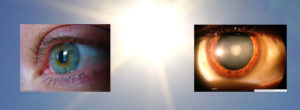
A key to identifying the right combination of drugs is having a preclinical model in which to test the combinations. Chen and colleagues screened compounds that preserved retinal structure and function and that targeted various members of the largest family of receptors in humans, the G protein-coupled receptors (GPCRs). GPCRs are proteins that go through the cell membrane multiple times and have extracellular and intracellular regions. Not surprisingly, GPCRs are the targets of many approved drugs, including those used to treat various psychological disorders, asthma, and hypertension, just to name a few. The authors used a mouse model of light-induced retinal damage to screen the compounds.
First, the authors determined which GPCR-encoding genes were expressed in the mouse retinas, then matched those receptors with compounds targeting those receptors. Some of the compounds stimulated one or more type of GPCR and some inhibited one or more type of GPCR. Of the 16 compounds that protected the mice from light-induced retinal damage, 2 had FDA-approved versions— bromocriptine and metoprolol. Bromocriptine is an agonist (stimulator) at several GPCRs, but at the lowest concentrations, this drug is relatively specific for a specific type of dopamine receptors. Bromocriptine is used to treat several diseases, including pituitary tumors and Parkinson’s disease. Metoprolol is an antagonist (inhibitor) of a specific type of adrenergic receptor; this drug is used to treat high blood pressure, prevent migraines, and regulate heart rate. Two other FDA-approved drugs had previously been identified as preserving retinal function and preventing light-induced damage: Tamsulosin and doxazosin, both of which are antagonists at another type of adrenergic receptor and are used to treat high blood pressure and urinary retention related to the presence of an enlarged prostate.

The authors compared how monotherapy (giving the mice one drug at a time) compared with combination therapy (giving the mice two or three drugs) in preserving retinal function and preventing light-induced retinal damage. By combining bromocriptine and metoprolol with either tamsulosin or doxazosin, much lower doses were effective than those required to achieve a benefit when used as monotherapies. Furthermore, as many as 87% of the mice receiving those triple combinations were completely protected; whereas even the double combinations only provided complete protection for at most 50% of the mice. Because the molecular signaling pathways that the different receptors use are known, this study also provides a rationale for exploring other combinations that promote the beneficial pathways and reduce the signaling through the adverse pathways in this disease. More importantly, this study illustrates the power of systems pharmacology in identifying molecular pathways that contribute to the disease and combinations of treatments (Figure 2) with the potential modify the activity of those pathways to benefit patients.
Highlighted Article
Y. Chen, G. Palczewska, I. Masuho, S. Gao, H. Jin, Z. Dong, L. Gieser, M. J. Brooks, P. D. Kiser, T. S. Kern, K. A. Martemyanov, A. Swaroop, K. Palczewski, Synergistically acting agonists and antagonists of G protein–coupled receptors prevent photoreceptor cell degeneration. Sci. Signal. 9, ra74 (2016). PubMed
Cite as: N. R. Gough, Drug Repurposing: Preserving Vision with New Drug Combinations. BioSerendipity (20 July 2017). https://www.bioserendipity.com/2017/07/20/drug-repurposing-preserving-vision-with-new-drug-combinations/

